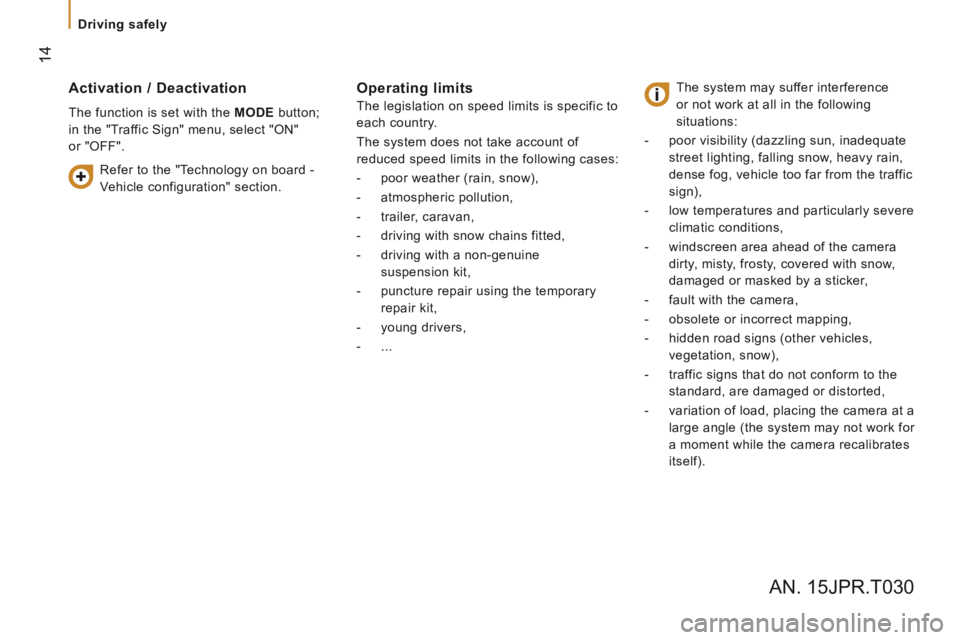Page 183 of 308
181Va n
d
imensions Model name GVW
u
nbraked trailer
r
ecommended nose weight
L3 H2 33
3 300 750 100
35 3 500 750 100
435 3 500 750 120
440 4 005 750 120
L3 H3 33
3 300 750 100
35 3 500 750 100
435 3 500 750 120
440 4 005 750 120
L4 H2 435
3 500 750 120
440 4 005 750 120
L4 H3 435
3 500 750 120
440 4 005 750 120Weights
9
TECHNICAL DATA
Page 264 of 308

262
WEIGHtS And tOWE d LOA d S ( KG )
For more information, refer to your registration certificate.
In each country, it is imperative that the towed loads authorised by
local legislation are complied with. To find out your vehicle's towing
capacities and its gross train weight, consult a franchised dealer.
The maximum authorised speed is reduced when towing (comply
with the legislation in force in your country).
With load transfer, the braked trailer weight can be increased,
on condition that the equivalent of this load is removed from the
vehicle so that the GTW is not exceeded. Warning: towing with a
lightly loaded towing vehicle may have an adverse effect on its road
holding.
The GTW and towed load values indicated are valid up to a
maximum altitude of 1000 metres; the towed load mentioned must
be reduced by 10 % for each additional 1000 metres.
High ambient temperatures may result in a reduction in the
performance of the vehicle in order to protect the engine; when the
ambient temperature is higher than 37 °C, limit the towed weight.
The kerb weight is equal to the weight without load + driver (75
kg) +
fuel tank filled to 90%. Before towing a trailer, check
that:
-
the nose weight on the
towbar ball does not exceed
the value (S) indicated on
the trailer's weights plate,
-
the maximum trailer weight
is less than the value
indicated on the trailer's
weights plate and the Gross
Vehicle Weight (GVW)
does not exceed the value
indicated on the vehicle's
weights plate.
-
in the case of a self-
supporting trailer
, the Gross
Train Weight must not
exceed the value indicated
on the vehicle's weights
plate.
General points
Tipper body
Page 292 of 308

14
Driving safely
Activation / Deactivation
The function is set with the MODE button;
in the "Traffic Sign" menu, select "ON"
or "OFF".
Operating limits
The legislation on speed limits is specific to
each country.
The system does not take account of
reduced speed limits in the following cases:
- poor weather (rain, snow),
- atmospheric pollution,
- trailer, caravan,
- driving with snow chains fitted,
- driving with a non-genuine
suspension kit,
- puncture repair using the temporary
repair kit,
- young drivers,
- ...
The system may suffer interference
or not work at all in the following
situations:
- poor visibility (dazzling sun, inadequate
street lighting, falling snow, heavy rain,
dense fog, vehicle too far from the traffic
sign),
- low temperatures and particularly severe
climatic conditions,
- windscreen area ahead of the camera
dirty, misty, frosty, covered with snow,
damaged or masked by a sticker,
- fault with the camera,
- obsolete or incorrect mapping,
- hidden road signs (other vehicles,
vegetation, snow),
- traffic signs that do not conform to the
standard, are damaged or distorted,
- variation of load, placing the camera at a
large angle (the system may not work for
a moment while the camera recalibrates
itself).
Refer to the "Technology on board -
Vehicle configuration" section.
AN. 15JPR.T030
Page 308 of 308

14
Driving safely
Activation / Deactivation
The function is set with the MODE button;
in the "Traffic Sign" menu, select "ON"
or "OFF".
Operating limits
The legislation on speed limits is specific to
each country.
The system does not take account of
reduced speed limits in the following cases:
- poor weather (rain, snow),
- atmospheric pollution,
- trailer, caravan,
- driving with snow chains fitted,
- driving with a non-genuine
suspension kit,
- puncture repair using the temporary
repair kit,
- young drivers,
- ...
The system may suffer interference
or not work at all in the following
situations:
- poor visibility (dazzling sun, inadequate
street lighting, falling snow, heavy rain,
dense fog, vehicle too far from the traffic
sign),
- low temperatures and particularly severe
climatic conditions,
- windscreen area ahead of the camera
dirty, misty, frosty, covered with snow,
damaged or masked by a sticker,
- fault with the camera,
- obsolete or incorrect mapping,
- hidden road signs (other vehicles,
vegetation, snow),
- traffic signs that do not conform to the
standard, are damaged or distorted,
- variation of load, placing the camera at a
large angle (the system may not work for
a moment while the camera recalibrates
itself).
Refer to the "Technology on board -
Vehicle configuration" section.
AN. 15JPR.T030